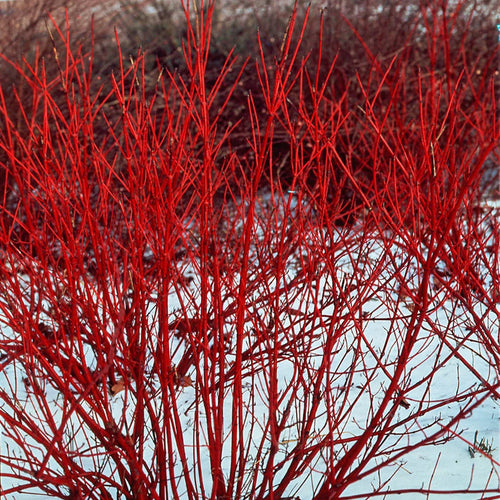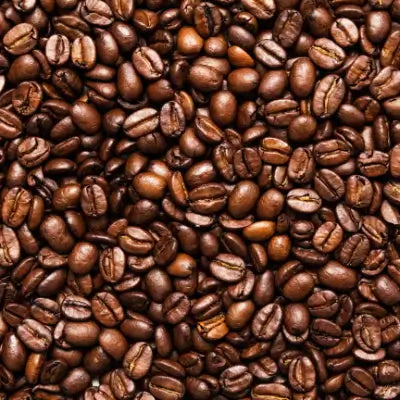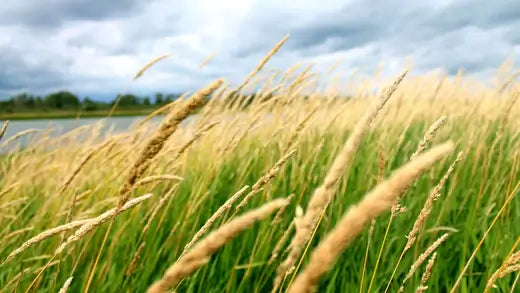Red Osier Dogwood Shrub Has Stunning Bark
The red osier dogwood shrub goes by many names, including red-twig dogwood, American dogwood, red willow, and red-stem dogwood. It's scientific name is Cornus sericea. No matter the name it goes by; however, this deciduous perennial is most easily recognized by its bright red stems, which make an impressive statement against a snowy winter landscape.
Red osier dogwoods grow best in hardiness zones 2 to 7. Loose spreading with upright stems and arching branches, the medium shrubs grow five to eight feet, while larger shrubs can grow as tall as twelve feet. For this reason, they are an excellent choice for hedges and screening, massing, and mixed borders. However, they multiply, so they should be pruned or sheared to the ground in the spring in landscaped gardens to keep them under control. The bright red stems tend to fade to gray, so regular pruning, which results in new bright red growth, is also desirable for an attractive garden.
Red Osier Dogwood Shrub Is Stunning Year-Round
This plant is enjoyed for its year-round interest. Fragrant, ivory-white blossoms appear in flat clusters in May and June and are followed in late summer by clusters of tiny white berries. Their variegated leaves turn a reddish-purple in autumn, providing added interest, and after they fall away, the dogwoods' bright red stems carry them through the winter. Popular companion plants in landscaping include daylilies, ruby spice, hydrangeas, and rose of Sharon. They are beautiful when paired with evergreens and Japanese maples.
It prefers full sun or partial shade and moist soils. They do well in marshy, boggy areas and are particularly attractive to marsh, shorebirds, and butterflies. Thickets of this dogwood provide shelter for various bird species. They provide year-found food for deer. As for diseases, these shrubs can be susceptible to twig blights, canker, and leaf spots. Common pests include scale, leaf miners, and bagworms and may be controlled with pesticides.
Red Osier Dogwood Shrub Is Easy To Grow
Propagation is quickly established by seed or through cuttings. Seeds can be scattered and do not need to be removed from the fruit. Hardwood cuttings the thickness of a pen or pencil can be taken in the late fall, where a bud can be found at either end. Cutaway side branches, dip in rooting hormone, and pot. It may take up to a year for red osier dogwood to take root, but after they do, they can be transplanted outside.
While gardeners enjoy red osier dogwoods for their year-round visual interest, Native American tribes used different aspects of the shrub. The inner bark was used in tobacco mixtures, and the stems made dream catchers for tanning animal hides. The red stems were also used to weave colorful baskets and to make dyes. Although tart in taste, they found the berries edible. A versatile plant, Native Americans have also used it as remedies for ailments, including headaches and sore throats, as an anti-diarrheal, and to treat weak kidneys.


















































